The Eternal Struggle: Women and Musical Creation by Éric Champagne
/ February 1, 2015
Version française...
On March 8, International Women’s Day, we take note of the degree to which social inequalities with regards to “the second sex” are still all too present in our society. In music, it is hard to contest the fact that composers make up a select “old boy’s club” where women are very rarely welcomed. Nevertheless, a little searching reveals many exceptional female composers throughout music history. As for contemporary female composers, they are becoming more and more prominent, although there is still much work to be done to attain true equality in this domain. Here is a historical survey and a contemporary analysis.
Implications of Social Values
For centuries, three major factors have worked against female composers: the Catholic religion, access to education, and social conventions. The church long proscribed musical performance by women, so it stands to reason they did not support female composers! Kassia (Saint Kassia of Constantinople, c. 805-c. 865) and Hildegard von Bingen (1098-1179) remain two remarkable exceptions: these two composers flourished in isolation, within their respective religious communities, their seclusion sheltering them from the church’s dictates.
Access to education was another major obstacle. Composition requires rigorous musical training, and it was extremely rare that women could have access to such schooling. A few of them, coming from more liberal families, had access to education that allowed them to obtain the same credentials as their brothers. Composers such as Francesca Caccini (1587-1641) and Barbara Strozzi (1619-1677) owed a great deal to their family backgrounds for the development of their talent and careers.
The most persistent impediment to the emancipation of women composers remained that of social convention. Many women with an equivalent, or even superior talent to their male counterparts were relegated to the second tier of musical achievement (often in the shadow of a famous husband or brother), when they were not simply dismissed because of conventional prejudice. The case of Fanny Mendelssohn (1805-1847) is egregious: although her family supported her as a performer, her father denied her the possibility of a career as a composer. In a letter to his daughter he wrote, “Music will perhaps become an occupation for him (Felix), while for you, it must remain simply a hobby.” (Cited in a French article on sisyphe.org: bit.ly/sisyphe-compositrices.) This shows to what point social convention was incontrovertible, even in the most open artistic circles.
Nevertheless, female composers pursued their vocation against all odds. The dissemination of their music was difficult (and controlled by men), and their output mainly limited to chamber music: art songs and pieces for piano and small ensembles. The world of symphonic music and opera was forbidden to them, given the widespread belief that women could not produce “great” works.
In this context, there are certain remarkable exceptions. The Frenchwoman Louise Bertin (1805-1877) in 1836 attended the production of her opera La Esmeralda, whose original libretto by Victor Hugo was adapted from his novel Notre-Dame de Paris. Likewise, Ethel Smyth (1858-1944) from Britain, a notorious suffragette, remains to this day the only female composer to have had her work produced at the Metropolitan Opera in New York with her opera Der Wald. The American, Amy Beach (1867-1944), left us her “Gaelic” symphony, which can proudly stand beside those of Brahms and Dvořák with its dense orchestration and its skilful use of folk melodies. These three examples are only the tip of the iceberg of a repertoire that has yet to be discovered and celebrated.
Canadian Female Composers
It was in English Canada that the first female composers succeeded in making careers. Sophie-Carmen Eckhardt-Gramatté (1899-1974), Jean Coulthard (1908-2000), Barbara Pentland (1912-2000), Violet Archer (1913-2000) and Ann Southam (1937-2010) left their mark on our country’s history. Over the course of the twentieth century, the prominence of female composers and the blooming of their talent on both local and international stages has only increased.
In Quebec, the rise of female composers took place mainly after the Second World War, and is most noteworthy in the domain of electronic and electroacoustic music with Micheline Coulombe Saint-Marcous (1938-1985) and Marcelle Deschênes (b. 1939) as the forerunners. Roxanne Turcotte (b. 1960) and Monique Jean (b. 1960) are the principal female composers currently active n the electronic music scene, while the upcoming generation of electronic music composers includes a large number of inventive and original women. As far as instrumental music is concerned, it is the composers born in the fifties (such as Isabelle Panneton and Linda Bouchard) who were among the first to make their mark in Quebec and elsewhere. It is significant that many composers of the following generation, such as Alejandra Odgers (b. 1967), Ana Sokolović (b. 1968) and Analia Llugdar (b. 1972) have chosen Quebec as fertile ground to develop their art, a sign of the openness of the Quebec scene compared to other countries.
Female Composers Today
At the dawn of the 21st century, the occupation of composer is distinctly more open to women, despite certain prejudices and misconceptions that still persist and that may, to some extent, slow down certain vocations. Nevertheless, we are still far from equality. According to a study by the Canada Council for the Arts (available here: bit.ly/artist-profile-CCA), based on the 2001 census, 32% of “conductors, composers and arrangers” in Canada were women, but the organization doesn’t have more precise figures concerning female composers. If we look at the Canadian Music Centre, 147 of the 850 associate composers in 2014 (17%) were women. This isn’t very many, but the situation is no better elsewhere. A study by the French Société des auteurs et compositeurs dramatiques (available in French only: bit.ly/SACD-femmes) surveyed the programs of major concerts in France for the 2014-2015 season and found only 16 female composers, versus 1394 males. This means that female composers barely occupy 1% of French concerts, and their music represents only 4% of works performed.
The gains made by Feminism allowed female composers to carve out a place in the sun for themselves, not without difficulty (testimonies abound in this regard), but with an openness that is unprecedented in human history. However, we still have a long way to go before the various powers that be in the community – especially those who control artistic direction, the commissioning of works, and the allotment of grants – take their share of responsibility regarding the dissemination of these creators’ music. As with every other domain in society, it is our collective duty to strive toward equality between the sexes.
Five Portraits of Contemporary Female Composers
Sofia Gubaidulina (1931)
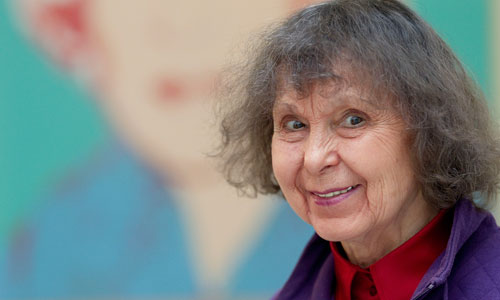
An assistant to Shostakovich in the 1950s, Sofia Gubaidulina is a unique creator for whom a sense of the sacred – and more broadly, religious themes – is paired with original and refined sonic research. Completely enamoured of the sacred, this composer even draws on mystical rites to create music that is highly introspective and inward-looking. This style is especially evident in her 1981 violin concerto Offertorium, commissioned by Gidion Kremer, which ends with an almost ecstatic meditation, or even her Viola Concerto (1996), which has noble and tragic depth.
Kaija Saariaho (1952)
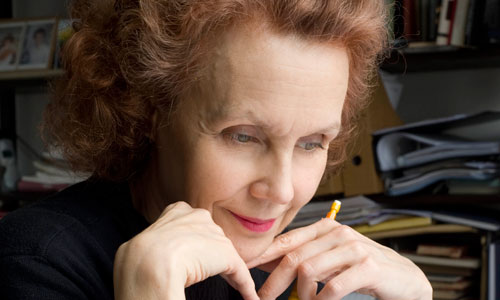
A major figure in Finnish contemporary music, today Saariaho is one of the most respected and appreciated composers in the world. She started developing her work in the wake of the spectralism movement, notably with her magnificent Lichtbogen For Nine Musicians and Live Electronics (1986). She gradually became freer in her work, moving toward richer self-expression and an expanded lyricism. Her first opera, l’Amour de loin (2000), from a libretto by Amin Maalouf, met with exceptional success during its premier at the Salzburg Festival.
Jennifer Higdon (1962)
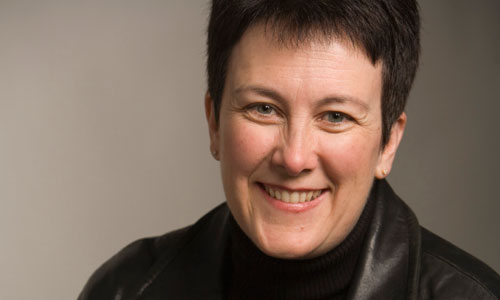
All the rage in the USA, Jennifer Higdon made a name for herself with her symphonic poem Blue Cathedral (1999). She boasts a varied catalogue of chamber music, vocal music, choral pieces and orchestral works, including several concertos for piano, oboe, soprano saxophone, and percussion. She is known especially for her Violin Concerto, which was commissioned, premiered, and recorded by Hilary Hahn, and which won the Pulitzer Prize in 2010. Watch out for the premier of her first opera, Cold Mountain, which will appear at the Santa Fe Opera beginning August 1, 2015.
Jocelyn Morlock (1969)
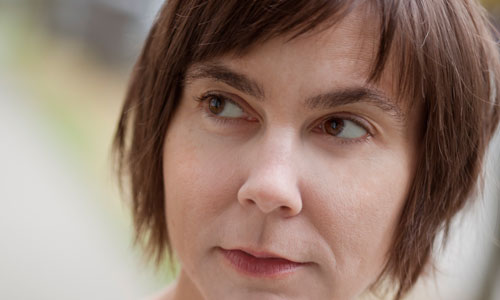
Originally from Manitoba, Jocelyn Morlock now lives and composes in Vancouver. A prolific composer, she began a composition residency in 2014 with the Vancouver Symphony Orchestra immediately after having served as composer-in-residence for Music on Main, a highly original contemporary concert series. Her music, informed by an eccentric and atypical postmodernism, is profoundly tonal and modal, though a product of a colourful context that is rich in new instrumental techniques. Cobalt (2009), for two violins and orchestra, is definitely one of her most popular pieces and is especially emblematic of her work.
Cléo Palacio-Quintin (1971)
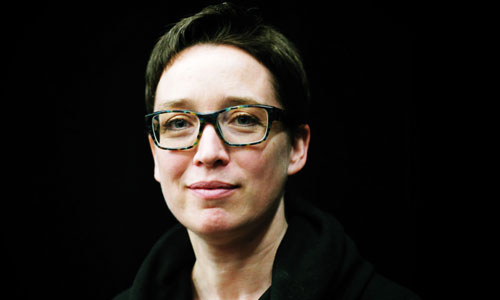
Montreal native Cléo Palacio-Quintin creates instrumental works, mixed and electronic. A sonic explorer, she has developed and plays the hyper-flute; connected to a computer using electronic sensors, this new type of flute allows her to create mixed interactive pieces. She collaborates with prestigious soloists, chamber musicians, and ensembles in North America as well as in Europe. The composer-in-residence at Montreal’s Chapelle Historique du Bon-Pasteur from 2009 to 2011, she received an Opus award for composition for the 2010-2011 artistic season.
Translation: Rona Nadler and Rebecca Anne Clark
Listen and Learn: An excellent radio series by France musique is available free online (in French only). Each section deals with a female composer or a specific period and features several pieces by these all-too-often unjustly forgotten artists. bit.ly/histoire-compositrices
Quebec’s Female Composers to Watch Out For
· Anne Lauber (1943)
· Isabelle Panneton (1955)
· Michèle Boudreau (1956)
· Chantale Laplante (1956)
· Linda Bouchard (1957)
· Marie Pelletier (1959)
· Monique Jean (1960)
· Estelle Lemire (1960)
· Roxanne Turcotte (1960)
· Suzanne Hébert-Tremblay (1961)
· Rachel Laurin (1961)
· Alejandra Odgers (1967)
· Ana Sokolovic´ (1968)
· Analia Llugdar (1972)
· Nicole Lizée (1973)
· Katia Makdissi-Warren (1970)
· Stacey Brown (1976)
· Emily Hall (1976)
· Marie-Pierre Brasset (1981)
· Sonia Paço-Rocchia (1982)
Version française... | |

